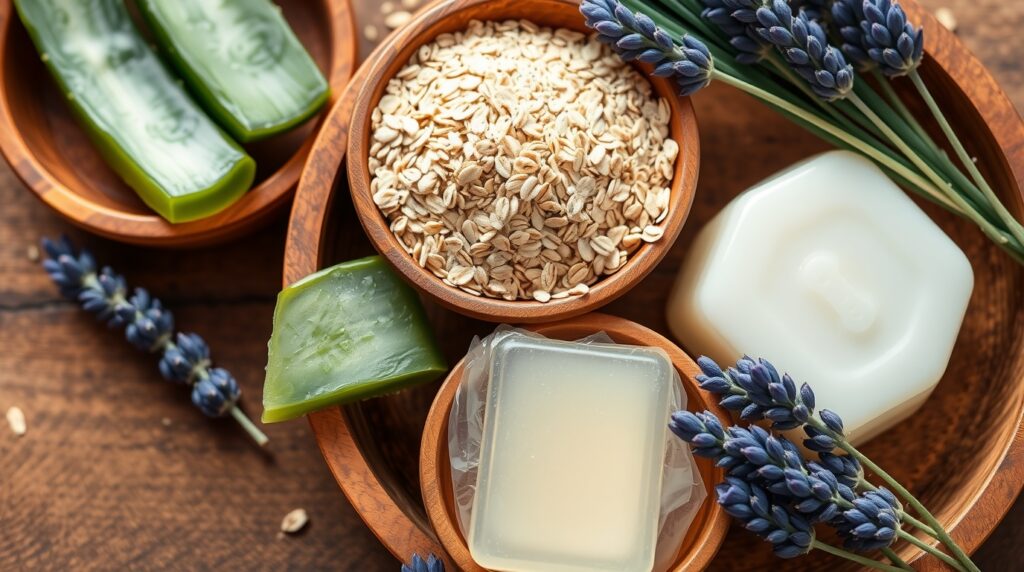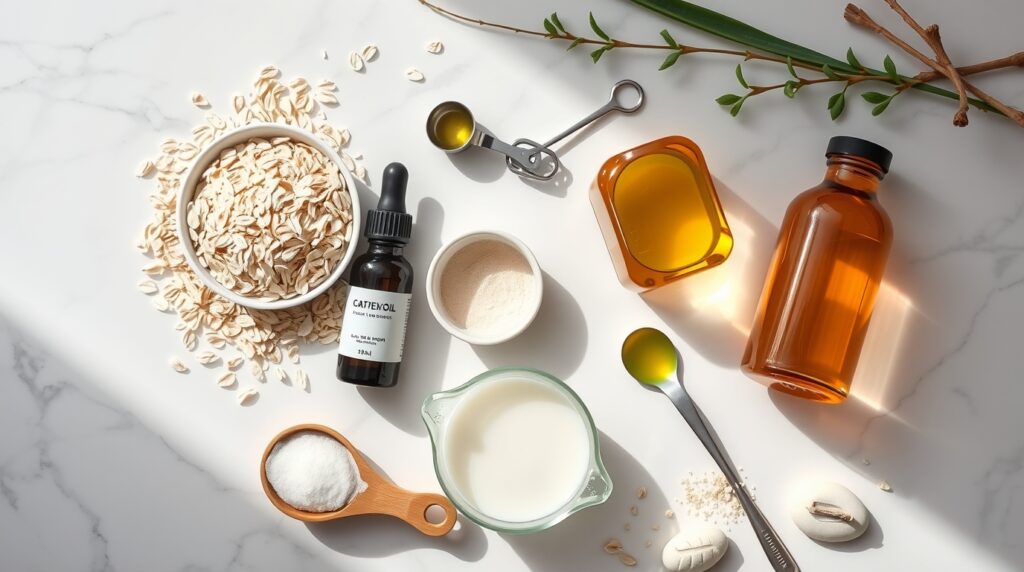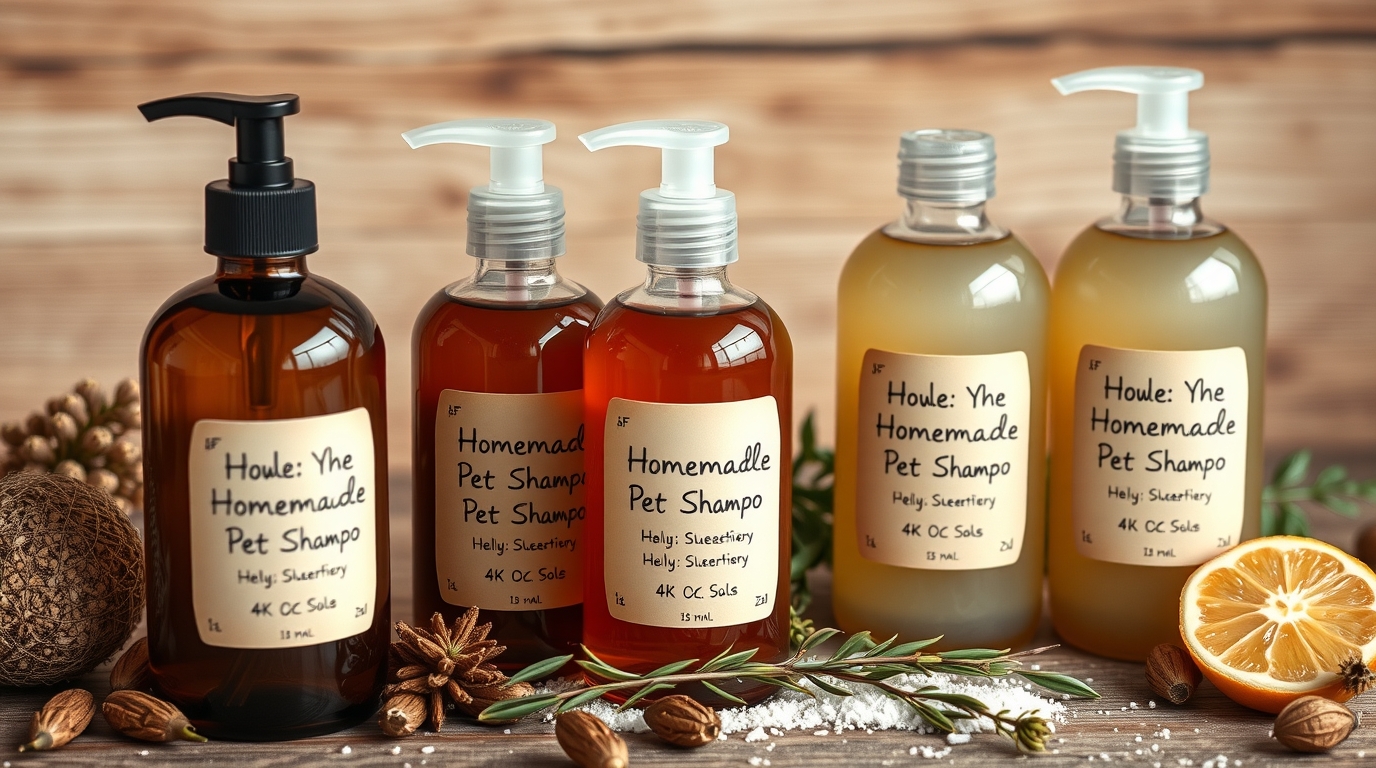Homemade pet shampoo recipes
As a caring companion to your four-legged family member, you deserve options that prioritize their well-being. Many store-bought grooming products contain harsh chemicals or unregulated additives – but creating safer, customized alternatives is easier than you think.
Basic kitchen staples like baking soda and vinegar can become powerful allies in your pet care routine. These natural ingredients often outperform pricey brands while being gentler on sensitive skin. Best of all, you’ll know exactly what’s in every batch.
Concerns about commercial products are growing among animal lovers. Unlike human cosmetics, most animal shampoos aren’t federally regulated unless they’re medicated. This leaves room for questionable additives that might irritate paws or fur.
By mixing simple formulas at home, you gain control over quality while saving money. Most recipes take under 10 minutes to prepare and use items already in your cabinets. The result? A tailored cleansing experience that keeps tails wagging.
Key Takeaways
- Common household items can create effective, budget-friendly grooming solutions
- Commercial animal shampoos may contain unregulated or irritating ingredients
- Custom blends allow complete control over product safety and quality
- Most DIY formulas require minimal time and basic kitchen supplies
- Natural alternatives often prove gentler for sensitive skin types
Understanding Your Pet’s Unique Skin Needs

Your dog’s skin acts as their first defense against environmental threats – but it works differently than yours. Unlike human skin, which thrives in acidic conditions, canine skin operates best in a slightly alkaline environment. This fundamental difference shapes their grooming requirements.
Why pH Balance Matters
Human skin maintains a pH of 5.5-5.6, while dogs range from 6.2-7.4. Using products designed for people disrupts this balance. Human shampoo’s acidity strips natural oils, leaving paws itchy and prone to cracking. Over time, this pH mismatch can weaken protective barriers against parasites and bacteria.
Spotting Sensitivity Signs
Watch for persistent scratching, redness between toes, or dandruff-like flakes. These often signal irritation from improper products or environmental triggers. Short-haired breeds might show reactions faster, while thick-coated dogs could hide symptoms until they escalate.
Seasonal allergies and genetic factors also play roles. Some dogs react to pollen, while others inherit sensitive skin. Choosing pH-balanced solutions helps maintain moisture without triggering new issues. Remember – healthy skin means a happier, more comfortable companion.
Homemade pet shampoo recipes for a Natural Clean
Many grooming products lining store shelves hide risks behind colorful labels. Popular dog shampoo brands often contain synthetic additives that may trigger allergic reactions or long-term health issues. This reality makes customized cleansing options not just preferable – but essential for conscientious owners.
Breaking Down Commercial Product Risks
Store-bought animal care products frequently include concerning components. Formaldehyde preservatives appear in surprising places, while sulfates create foamy lathers at the cost of skin dryness. These hidden hazards explain why more families are switching to controlled formulations.
The pet care industry operates with minimal oversight. Manufacturers can include over 15 questionable ingredients without safety testing. Common offenders like artificial fragrances and mineral oils often cause immediate irritation or accumulate toxins over time.
| Toxic Ingredient | Common Use | Safer Alternative |
| Parabens | Preservative | Vitamin E oil |
| Phthalates | Fragrance stabilizer | Essential oils |
| Polysorbates | Emulsifier | Castile soap |
Custom blends eliminate guesswork about what touches your companion’s skin. You can omit problematic additives while keeping effective cleansing agents. This approach proves particularly valuable for sensitive pups needing gentle care.
Switching to controlled ingredients supports overall wellness. Simple formulas reduce chemical exposure while maintaining coat health. Best of all, you decide exactly what works for your furry friend’s unique needs.
Essential Ingredients & Their Benefits

Your kitchen holds surprising solutions for maintaining healthy coats and happy companions. Three household staples form the backbone of effective cleansing blends, while natural additives address specific skin concerns.
The Cleansing Power Trio
White vinegar works double duty as a deodorizer and antibacterial agent. Its mild acidity cuts through dirt while leaving fur glossy. Paired with baking soda, this duo creates pH-balanced formulas that neutralize odors without stripping natural oils.
Castile soap serves as the perfect plant-based binder. Made from olive oil, this gentle cleanser lifts grime without synthetic detergents. “It’s the gold standard for sensitive skin care,” notes veterinary dermatologist Dr. Ellen Torres.
| Ingredient | Key Benefit | Best For |
| Apple Cider Vinegar | Odor elimination | Smelly coats |
| Baking Soda | pH balancing | Itchy skin |
| Liquid Castile | Gentle cleansing | Daily use |
Soothing Skin Superstars
Aloe vera gel cools irritation like nature’s bandage. Its moisturizing properties help heal minor scrapes during bath time. For anxious companions, lavender oil offers calming aromatherapy when diluted properly.
Oatmeal remains a time-tested remedy for dryness. When ground into powder, it creates a milky bath that reduces inflammation. Always combine these additives with base ingredients for maximum effectiveness.
“Natural components work synergistically – their combined benefits outweigh individual effects.”
These versatile elements allow customization for various needs. From shiny coats to flea prevention, the right mix keeps tails wagging through every sudsy session.
DIY Dog Shampoo Variations for Specific Needs
Tailored grooming solutions can transform bath time from stressful to soothing. Different coat types and skin conditions demand unique approaches – luckily, simple ingredient swaps create targeted treatments.

Soothing Solutions for Sensitive Skin
Oatmeal works wonders for irritated coats. Combine 1 cup ground oats with ½ cup baking soda in 4 cups warm water. Let the mixture sit for 10 minutes before straining. The milky liquid calms inflammation while removing dirt.
For extra hydration, mix ¼ cup aloe vera gel with 2 tablespoons vegetable glycerin. Add to a base of liquid castile soap. This combo locks in moisture without clogging pores.
Natural Defense Blends
Flea-fighting formulas needn’t contain harsh chemicals. Try blending 4 cups water, 1 cup white vinegar, and 1 cup mild baby shampoo. The acidity deters pests while maintaining skin balance.
Antibacterial options shine with apple cider vinegar’s power. Mix equal parts warm water and vinegar with fragrance-free dish soap. Add 2 ounces of glycerin to prevent dryness. This blend tackles germs while keeping coats soft.
“Customizable recipes let owners address multiple concerns in one wash – from odor control to wound care.”
How to Safely Make and Use Your Homemade Shampoo
Crafting your own grooming solutions gives you complete control over quality and safety. Proper preparation and application techniques ensure maximum effectiveness while keeping your furry friend comfortable during bath time.
Mixing Techniques and Proper Application
Start by combining ingredients in a clean dispenser bottle. Shake vigorously for 30 seconds to activate natural cleansers. For easy application, use warm water to wet your companion’s coat thoroughly before spraying the mixture from roots to tips.
Create a rich lather using gentle circular motions, focusing on dirt-prone areas like paws and underbelly. Keep the formula away from eyes – use a damp cloth for facial cleaning instead. Rinse until water runs clear, repeating if necessary to prevent residue buildup.
Storage Tips and Shelf Life Considerations
Store unused portions in airtight glass containers with pump tops. Amber bottles protect light-sensitive ingredients while maintaining freshness. Keep mixtures in cool, dark spaces for up to two weeks – label containers with preparation dates for easy rotation.
For larger batches, freeze portions in ice cube trays and thaw as needed. Always shake well before each use to redistribute natural oils. “Proper storage preserves effectiveness while preventing bacterial growth,” advises grooming expert Mia Tanaka.
Refillable spray bottles simplify application for quick touch-ups between full baths. Choose containers made from recycled materials to align your care routine with eco-friendly values.
Practical Bath Time Tips and Best Practices
Bathing your canine companion requires more than just soap and water – it’s about creating positive experiences. Proper techniques prevent stress while maintaining healthy skin and fur. Let’s explore how to make every wash effective and enjoyable.
Creating a Calm and Safe Environment for Your Pet
Start by setting up your space before bringing your dog in. Lay out towels, brushes, and diluted castile-based cleansers within reach. Keep treats nearby to reward calm behavior during the process.
Bathing frequency varies dramatically by breed. Hairless dogs like the Chinese Crested need weekly washes, while thick-coated Siberians thrive with monthly sessions. Overwashing strips protective oils, leading to dryness and irritation.
Always brush thoroughly first. Mats trap water against the skin, creating breeding grounds for bacteria. Test water temperature on your wrist – lukewarm feels best for sensitive paws.
Use high-value food rewards to build positive associations. Freeze peanut butter in a lick mat or offer small chicken pieces during rinsing. Nervous pups respond well to soft praise and gradual exposure.
Clean faces carefully with a damp cloth instead of spraying directly. Fold ears inward to prevent water entry, and wipe outward from eyes. For large breeds, use non-slip mats and waist-high tubs to prevent slips.
“Successful baths combine preparation with patience – rushing creates lasting negative memories.”
Conclusion
Crafting your own cleansing solutions empowers you to protect your four-legged friend’s well-being while embracing sustainable care. By choosing simple formulas, you eliminate exposure to questionable additives found in many store-bought products. This approach supports skin health and coat vitality through every sudsy session.
Creating these blends at home offers financial savings without compromising quality. Basic components like oatmeal or aloe gel cost pennies per wash compared to premium brands. You’ll gain flexibility to address specific needs – from allergy relief to pest prevention.
Your efforts connect you with a community valuing transparency in animal care. Sharing experiences helps refine techniques while promoting safer standards industry-wide. Together, we redefine what quality grooming means for our companions.
Remember – every customized bath strengthens the bond with your loyal sidekick. With clean water and mindful mixing, you’re building a foundation for lifelong wellness. Tailored care isn’t just possible – it’s within paw’s reach.
FAQ‘s
Can I use human shampoo on my dog?
No. Human formulas often disrupt a dog’s skin pH balance, leading to dryness or irritation. Opt for gentle, pH-balanced solutions made specifically for canines.
How does baking soda help in DIY dog shampoo?
Baking soda neutralizes odors and gently exfoliates. Combined with castile soap, it cleans without stripping natural oils, making it ideal for sensitive coats.
Are essential oils safe for dogs?
Some oils, like lavender, are safe in diluted amounts. Avoid tea tree, eucalyptus, or citrus oils, which can irritate. Always consult your vet before use.
What’s a quick recipe for itchy skin?
Mix 1 cup oatmeal, 4 cups warm water, and ¼ cup aloe vera gel. Blend, strain, and add ½ cup castile soap. Oatmeal soothes, while aloe moisturizes irritation.
How long does homemade shampoo last?
Most recipes stay fresh for 2–3 weeks if refrigerated. Avoid preservatives by making small batches and discarding if odors or textures change.
Can I repel fleas naturally?
Yes! Add 2–3 drops of lemon or neem oil to a base of castile soap and water. These oils deter pests without harsh chemicals.
How do I calm my anxious dog during baths?
Use calming scents like chamomile, play soft music, and offer treats. Keep water lukewarm and avoid spraying directly on the face.
Is vinegar safe for a dog’s coat?
Diluted apple cider vinegar (1:3 ratio with water) adds shine and balances pH. Avoid open wounds or raw skin, as it may sting.
Also Read:
- Cat Food vs Dog Food Chart –2026 Best Checklist
- Top 10 Best Homemade Dog Food Recipes: Healthy, Nutritious & Vet-Approved Meals


